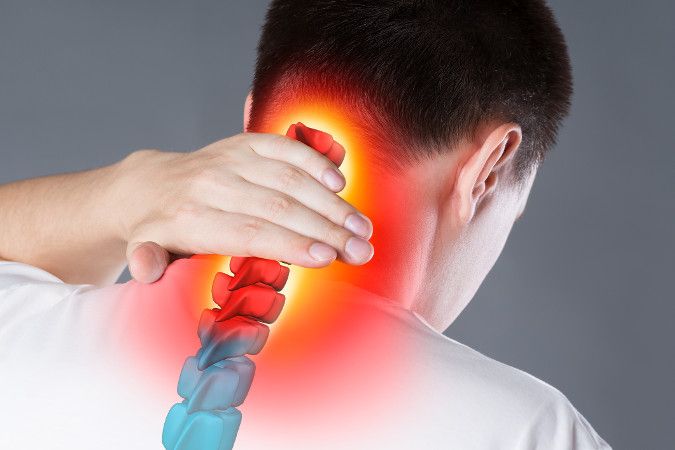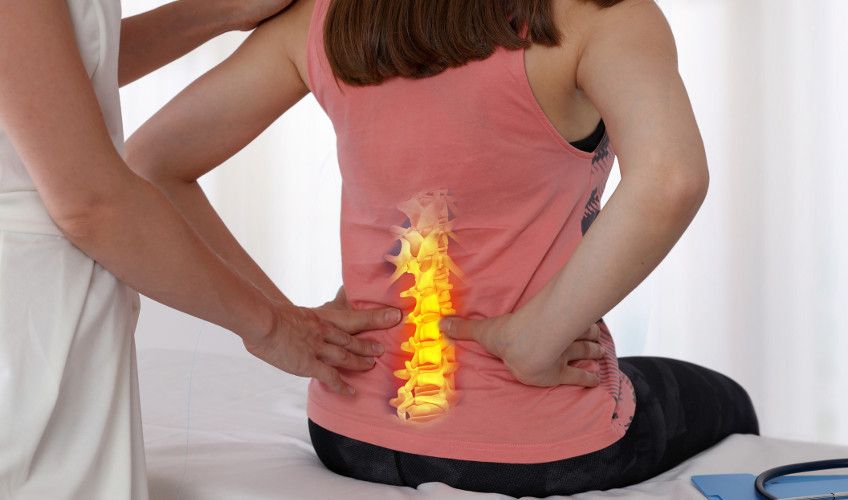Chiropractic Care for Spinal Stenosis is More Effective Than Surgery!
When it comes to back pain, there can be several reasons why you are hurting. One of the most common causes is spinal stenosis. Spinal stenosis occurs when there is a narrowing of the spaces within your spine. As the narrowing increases, it puts pressure on the nerves moving through the spine.
Spinal stenosis can occur in the lower back and the neck. Some of the symptoms for spinal stenosis include:
- Numbness or tingling in a foot or leg
- Weakness in a hand, arm, foot, or leg
- Problems with walking and balance
- Neck and lower back pain
- Pain or cramping in one or both legs when standing for a long period of time or when walking
- In severe cases, bowel or bladder dysfunction (urinary urgency and incontinence)
Spinal stenosis can impact your active and healthy lifestyle. People will find comfort in sitting or resting and choose to do that more throughout the day.
There are many spinal stenosis treatment options. However, when it comes to treatment, nothing is better than chiropractic care — not even surgery.
So, before you book an appointment with a surgeon, find out why chiropractic care can give you the same, if not better, results for your spinal stenosis!
What Causes Spinal Stenosis?
First, let’s look at what causes spinal stenosis. Understanding the causes of it helps you to see why surgery isn’t the best option.
Some people are born with a small spinal canal. But most spinal stenosis occurs when something happens to narrow the open space within the spine. Causes of spinal stenosis include:
- Overgrowth of bone: Wear and tear damage from osteoarthritis on your spinal bones can prompt the formation of bone spurs, which can grow into the spinal canal.
- Herniated disks: The soft cushions that act as shock absorbers between your vertebrae tend to dry out with age. Cracks in a disk’s exterior may allow some of the soft inner material to escape and press on the spinal cord or nerves.
- Thickened ligaments: The tough cords that help hold the bones of your spine together can become stiff and thickened over time. These thickened ligaments can bulge into the spinal canal.
- Abnormal growths: These can form inside the spinal cord, within the membranes that cover the spinal cord or in the space between the spinal cord and vertebrae. These are uncommon and identifiable on spine imaging with an MRI or CT.
- Spinal injuries: Car accidents and other trauma can cause dislocations or fractures of one or more vertebrae. Displaced bone from a spinal fracture may damage the contents of the spinal canal. Swelling of nearby tissue immediately after back surgery also can put pressure on the spinal cord or nerves.”
Most commonly, we will see older patients with moderate to advanced osteoarthritis who have spinal stenosis in the neck and/or lower back.

Why is Chiropractic Care Better than Surgery?
When it comes to the best treatment for pain, it might be tempting to go with spinal stenosis surgery. Many people see surgery as a “quick fix.” However, that “quick fix” comes at a cost.
As we will see, there are many factors involved in lower back and neck surgery that lead it not to be the best option for you.
Risks of Surgery
As a general rule, most people want to avoid surgery if they can. While spinal stenosis surgery is one of the “safer” surgeries, it is still surgery.
Surgery always carries the risk of something going wrong, leading to more surgery and medical care. In a study published in the journal Spine, results for surgery compared to chiropractic care for spinal stenosis differed in the long run.
Specifically, of the patients who had surgery, 18% had repeat surgery for recurrent spinal stenosis within eight years. This should matter in your decision-making process because the long-term effects could be costly.
Cost of Surgery
When it comes to health care costs, prices are always increasing. People in the U.S. alone spend $300 billion every year on pain treatment.
In an effort to see if the cost of chiropractic care was indeed less than surgery, researchers for the BMC Health Services looked at more than one thousand citations and 25 eligible studies between chiropractic care and surgery.
The results stated that, overall, chiropractic care costs less than other medical options. The cost of surgery can hit your wallet hard. Coupled with the risks of surgery, it makes less sense to go through with surgery. This is especially true in light of how effective chiropractic care can be.
Outcomes Are Similar
According to the same study in Spine Journal, spinal stenosis patients showed no significant differences between the two groups (surgical and chiropractic care) in terms of pain, functioning, or disability.
This study included more than 650 spinal stenosis patients who had surgery or received nonsurgical treatment such as chiropractic care, physical therapy, or medications.
That means surgery comes with more risks, yet its outcome is often similar to chiropractic care. Clearly, chiropractic care is a safer option for spinal stenosis treatment.

How Can a Chiropractor Help with Spinal Stenosis?
Chiropractic treatment for spinal stenosis focuses on maintaining proper alignment in your spine. When the spine is aligned, it helps the nervous system transmit messages without interruptions.
One of the best ways to do this is through the Cox Technic. The Cox Technic allows the chiropractor to gently adjust your spine to better help the nervous system send messages to the rest of your body.
The Cox Technic, which is a nonsurgical, hands-on, decompression technique, gently relieves the pressure on sensitive discs and nerves. The results speak for themselves, and most chiropractors opt for the Cox Technic.
Are You Ready to Resume Your Active Lifestyle?
Don’t let pain run your life anymore. If you’re struggling with spinal stenosis, come see Dr. Galante at Algonquin Chiropractic Center in Algonquin, IL.
Dr. Galante uses a combination of the Cox Technic, massage therapy, spinal bracing, orthotics, vibration therapy, and laser therapy to improve patients’ quality of life. Through a personalized treatment plan and gentle adjustments, Dr. Galante can help you get back to doing what you love!
Editor’s Note: This blog was originally published in August 2017 and updated in January 2020.

